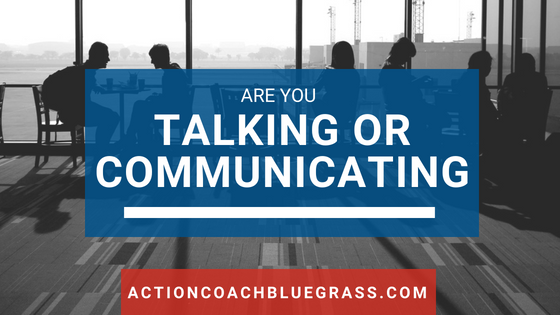[et_pb_section fb_built=”1″ _builder_version=”3.22″ global_colors_info=”{}”][et_pb_row _builder_version=”3.25″ background_size=”initial” background_position=”top_left” background_repeat=”repeat” hover_enabled=”0″ global_colors_info=”{}” sticky_enabled=”0″ custom_padding=”10px|||||”][et_pb_column type=”4_4″ _builder_version=”3.25″ custom_padding=”|||” global_colors_info=”{}” custom_padding__hover=”|||”][et_pb_text _builder_version=”4.4.2″ background_size=”initial” background_position=”top_left” background_repeat=”repeat” global_colors_info=”{}”]
We’ve all heard it from our friends, co-workers, networking partners and pretty much everybody who ever tried to tell someone else what to do – “they just didn’t listen to me”, or some form of that statement. Well I have good news and bad news for you, and the good news is that you are probably right! The bad news is that there is also a high likelihood that it’s your fault anyways.
Before I go into why it’s your fault, let’s define what I mean by Communication. There are all sorts of technical and fancy ways to describe what communication is, yet in the end I like to boil it down to one simple thought: Communication is the Response You Get. It’s not usually a matter of did you communicate or not, it really comes down to did you communicate effectively. The only way to know if your communications were effective are by observing (watching, seeing, listening) the response. If you get the response you desired, then you have successfully communicated, and if you don’t…, well then you didn’t. It is really that simple.
There are three primary ways we communicate with others – body language/tone of voice, written, and spoken. Reading body language and tone can range from very easy to very complex. The good news is that most people in most instances are pretty obvious and easy to read if we simply pay attention. There is a whole science to this as well, called Neuro-Linguistic Programming (NLP), if you want to learn more.
The second form of communication is written, which of course has its pros and cons. The biggest drawback to written communication is that you can’t always figure out the emotion (if there is any) in the words. You can’t see the person or hear their tone of voice, so we often “fill in the blanks” with what we assume the person’s mood to be. This is the biggest reason why email, texting, IMs, and the other apps for communicating can cause as many problems as they solve.
The easiest form of communication to master is verbal – simply learning how to talk and listen effectively. There are three levels of talking that I teach my clients – Talking At someone, Talking To someone, and Talking With someone, also known as a “conversation”. Effective verbal communication truly only happens when you are Talking With someone. Let’s look at each of these.
Talking At someone is that very negative, non-feedback seeking, demanding, don’t care what you think, my time is more important than yours, I don’t want your opinion, do what I say sort of talking. We all know exactly what it feels like to be “talked at”, yet we do it to others more often than we realize. This is NOT effective communication and is actually quite damaging in most cases.
Talking To someone is the less offensive slightly more caring approach, but it still isn’t effective communication. This is probably the most common form of communication that I see attempted by clients again and again. We often expect them to remember what we said, to learn what we “taught them” and to be able to walk away from this “conversation” with no doubt that they heard and understood you. If the response you get is a lot of head nodding/shaking and “yups” or “uh-huhs”, then you are Talking To them, not communicating.
Talking With someone or having a conversation is the only real lasting form of Communication. This means that you are both speaking AND listening with more listening than speaking. You are observing their non-verbal cues – posture and tone of voice – and you are asking for verbal feedback as well. Both people participate in conversations, and you don’t end the conversation without all parties confirming what they are taking away – action items, deadlines, agreements, etc…
The next time you don’t get the result you expected from someone that you asked (or told) to do something, do a quick self-check. Were you talking At, To, or With them when this communication failed to get you the response you wanted?
Author: Mark McNulty, Business Coach in Louisville, KY
[/et_pb_text][/et_pb_column][/et_pb_row][/et_pb_section]

